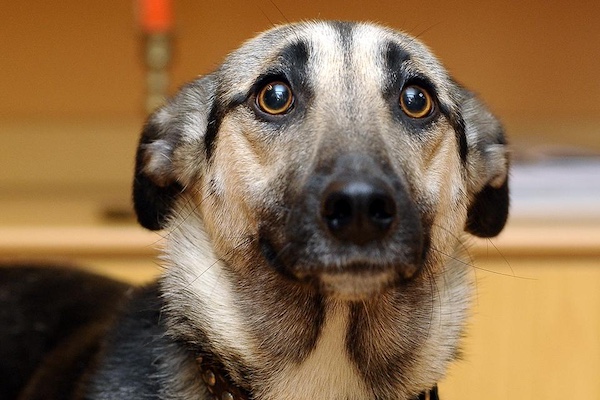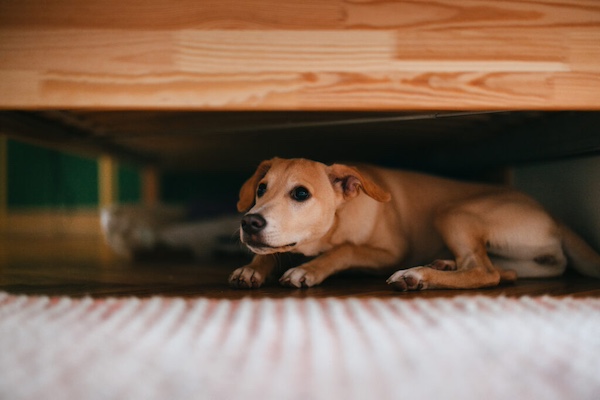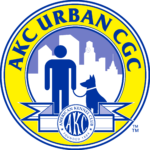Fear and anxiety in dogs can significantly impact their behavior and quality of life. Whether it’s triggered by loud noises, unfamiliar environments, or separation from their owner, fear and anxiety can cause distress for both dogs and their families.
The good news is that with patience, understanding, and consistent strategies, you can help your dog feel safer and more confident. In this post, we’ll explore the causes of fear and anxiety in dogs, how to create a supportive environment, and actionable steps to help your dog overcome these challenges.
Understanding Fear and Anxiety in Dogs
What Causes Fear and Anxiety?
Fear and anxiety in dogs can stem from a variety of sources:
- Loud Noises: Thunderstorms, fireworks, or household appliances can frighten some dogs.
- New Environments: Unfamiliar places, people, or animals can make a dog feel uneasy.
- Separation: Being left alone can trigger separation anxiety in dogs who are deeply attached to their owners.
- Past Trauma: Rescue dogs or those with a history of abuse may experience heightened fear or anxiety.
- Genetics: Some breeds or individual dogs are more predisposed to anxiety due to their temperament.
Signs of Fear and Anxiety
Common symptoms of fear and anxiety in dogs include:
- Trembling or shaking
- Excessive barking or whining
- Pacing or restlessness
- Hiding or attempting to escape
- Destructive behavior (e.g., chewing furniture, scratching doors)
- Loss of appetite or excessive salivation
It’s important to recognize these signs early so you can address the underlying issues before they escalate.
Fear vs. Anxiety
Fear is typically a response to a specific stimulus, such as a loud noise or a stranger. Anxiety, on the other hand, is a more generalized feeling of unease that may not be tied to a single event. Understanding this distinction can help you choose the best strategies to support your dog.
Creating a Safe and Comfortable Environment
One of the most effective ways to help a fearful or anxious dog is to provide a secure and calming environment.
Provide a Safe Space
Set up a designated area where your dog can retreat when they’re feeling scared. This could be a crate with a soft bed, a quiet corner of the house, or a cozy spot with their favorite blanket. Make this space a positive place by associating it with treats, toys, or soothing attention.
Use Calming Aids
There are various tools that can help create a more relaxing atmosphere:
- Calming Sprays or Diffusers: Products with pheromones mimic the natural calming scent that a mother dog provides for her puppies.
- Anxiety Wraps or Thundershirts: These snug-fitting garments provide gentle pressure, which can have a calming effect on some dogs.
- White Noise Machines: These can help mask external sounds like fireworks or loud neighbors.
Maintain a Consistent Routine
Dogs thrive on predictability. Keeping a consistent schedule for feeding, walks, and playtime can help reduce stress and give your dog a sense of security.
Desensitization and Counterconditioning
Desensitization and counterconditioning are powerful techniques for helping dogs overcome fear and anxiety.
What is Desensitization?
Desensitization involves gradually exposing your dog to the source of their fear in a controlled, non-threatening way. For example, if your dog is afraid of the vacuum cleaner, start by placing it in the room without turning it on. Reward your dog for staying calm. Over time, slowly increase their exposure by turning the vacuum on for short periods while offering positive reinforcement.
What is Counterconditioning?
Counterconditioning changes your dog’s emotional response to a fear trigger by associating it with something positive. For instance, if your dog is afraid of thunderstorms, play calming music and offer high-value treats during the storm to help them associate the noise with positive experiences.
Tips for Success
- Start with low-intensity exposure to the trigger.
- Pair exposure with treats, praise, or playtime to create positive associations.
- Be patient and move at your dog’s pace—forcing them into a situation can backfire and increase their fear.
Positive Reinforcement Training

Training is another effective way to reduce fear and anxiety in dogs by building their confidence and trust.
Teach Calming Commands
Commands like “sit,” “stay,” or “settle” can help redirect your dog’s focus and encourage calm behavior. For example:
- Teach “settle” by rewarding your dog when they lay down and relax on command.
- Use “stay” to help your dog remain calm during stressful situations, such as when guests arrive.
Reward Calm Behavior
Positive reinforcement is key to modifying behavior. Whenever your dog remains calm in a potentially stressful situation, reward them with treats, praise, or affection. This helps them associate calmness with positive outcomes.
Reducing Triggers and Managing Stress
While it’s impossible to eliminate all triggers, minimizing your dog’s exposure to stressors can make a significant difference.
Identify and Reduce Triggers
Pay attention to what causes your dog’s fear or anxiety and take steps to manage their exposure. For instance:
- If your dog is afraid of loud noises, use white noise machines or keep them in a quiet room during storms or fireworks.
- If they are anxious around new people, introduce them slowly and reward calm behavior.
Provide Mental and Physical Stimulation
Boredom and excess energy can worsen anxiety. Daily walks, interactive toys, and training exercises help keep your dog’s mind and body active, reducing stress.
Regular Exercise
Exercise is a natural stress reliever for dogs. Physical activity releases endorphins, which promote relaxation and reduce anxiety. Tailor the intensity and duration of exercise to your dog’s breed, age, and energy level.
When to Seek Professional Help
While many cases of fear and anxiety can be managed with training and environmental changes, some dogs may need additional support.
Signs to Seek Professional Help
- Persistent or worsening fear and anxiety
- Aggression or self-harming behaviors
- Difficulty managing your dog’s behavior despite consistent efforts
Professionals Who Can Help
- Dog Trainers or Behaviorists: These experts can provide customized training plans to address fear and anxiety.
- Veterinarians: If your dog’s anxiety is severe, a vet may recommend medication to help manage their symptoms. Medication is often used in conjunction with training for the best results.
Conclusion
Helping your dog overcome fear and anxiety requires patience, understanding, and consistent effort. By creating a safe environment, using desensitization and counterconditioning techniques, and reinforcing positive behavior, you can help your dog feel more secure and confident.
Remember, every dog is unique, and progress may take time—but with compassion and commitment, you can make a significant difference in your dog’s quality of life. Start implementing these strategies today, and give your dog the support they need to thrive.





